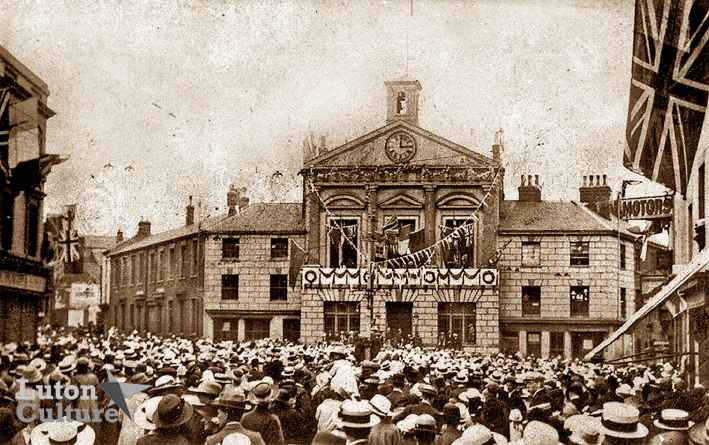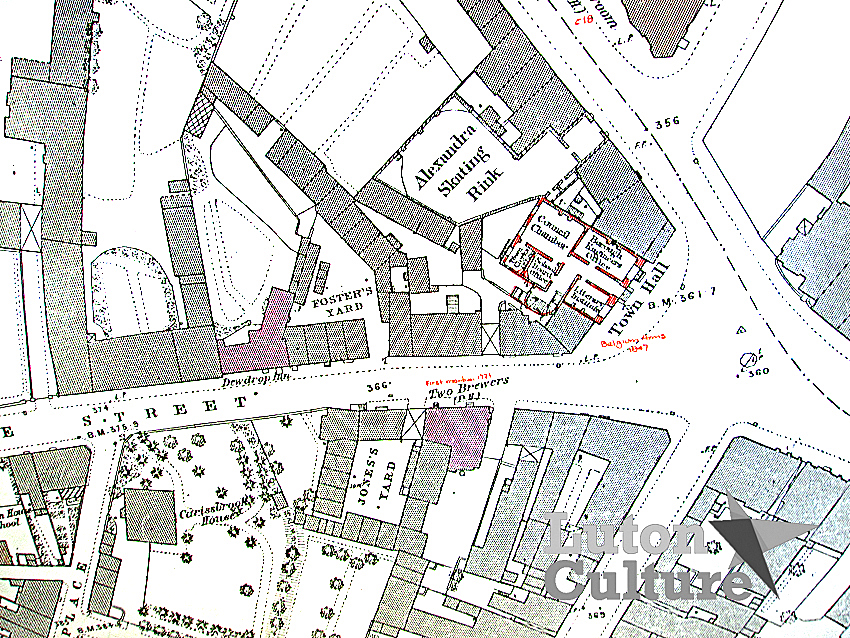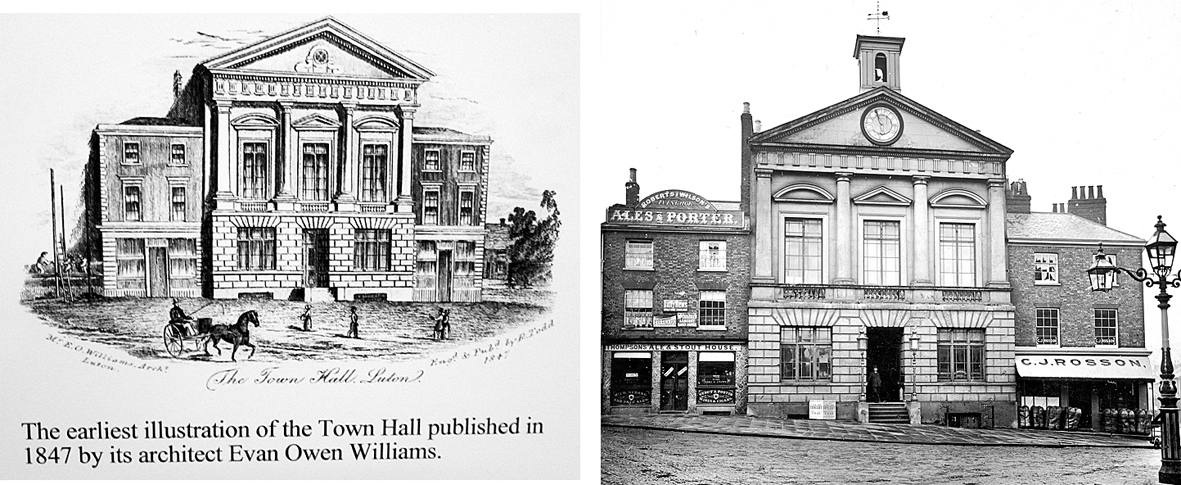
- Old Town Hall on Peace Day, shortly before the rioting broke out.
Although words like “disaster” and “degradation” were applied by the local Press to the Peace Day riots, there appears to have been few tears shed over the loss of the Town Hall as a building. For instance, The Tuesday Telegraph (July 22nd, 1919), in giving a brief history, said:
Luton Town Hall was purely utilitarian, and quite devoid of architectural or historical interest. The part of the building including the Council Chamber and the Assembly Hall was built in 1847 at a cost of about £2,200, the capital being raised in £10 shares. In 1874 Davis [Frederick Davis, author of Luton Past and Present] records that the shareholders were contemplating disposing of the building.
A feature of the building was the clock, which was provided by public subscription [August 1856] to commemorate the return to peace after the Crimean War.
In 1887, the jubilee year [Queen Victoria's golden jubilee], there was a proposal to erect a new Town Hall and municipal building, and although this never fully materialised, the Corporation at various times took useful steps towards that end by acquiring neighbouring properties, and bringing them into municipal service as and when required.
 Many people remember when the Belgium Arms was a popular tavern by the side of the Town Hall and when there were occupied cottages in Foster's Yard. Within quite recent years warehouse property has been bought to extend the area for a new building, and the result of this policy of acquisition has been that the Corporation acquired a magnificent site for future development, and meanwhile carried on their activities in a miscellaneous collection of premises connected by a variety of odd passages and stairways. [The map, right, is from 1887.]
Many people remember when the Belgium Arms was a popular tavern by the side of the Town Hall and when there were occupied cottages in Foster's Yard. Within quite recent years warehouse property has been bought to extend the area for a new building, and the result of this policy of acquisition has been that the Corporation acquired a magnificent site for future development, and meanwhile carried on their activities in a miscellaneous collection of premises connected by a variety of odd passages and stairways. [The map, right, is from 1887.]
When the last Luton Corporation Act was passed, one of the matters dealt with was the erection of a new Town Hall, power being taken in the Act to do this, subject to a minimum number of years elapsing before the work was put in hand.
Quite recently the Corporation were considering the practicability of proceeding with the scheme, but it was estimated the character of the building which would have been erected before the war for £75,000 would now cost at least £150,000, and it was further decided to postpone the matter, and in the meantime to effect certain improvements in the existing accommodation by taking in one further lot of premises at present still used as a shop.
Apart from all the municipal documents which have been destroyed, there were a few interesting documentary exhibits in the Mayor's Parlour, some of which are irreplaceable.
The rival publication, The Luton Reporter (July 22nd, 1919) also found the Town Hall crowded and inconvenient in many ways in view of the vast increase in the business and importance of the municipality. In fact the town had long outgrown it.
The original 1847 building had been extended by the acquisition of the Belgian Arms from Messrs Wilson and Roberts in 1887 (to be utilised as offices for the Inspector of Weights and Measures, the Toll Collector and the Sanitary Inspector). In 1897 two warehouses in Upper George Street were added, and in 1899 a butcher's shop in Upper George Street and three cottages in Foster's Yard, off Upper George Street.

- Town Hall illustration from 1847 and, right, a Frederick Thurston photo c1880 when the building had its bell tower.

